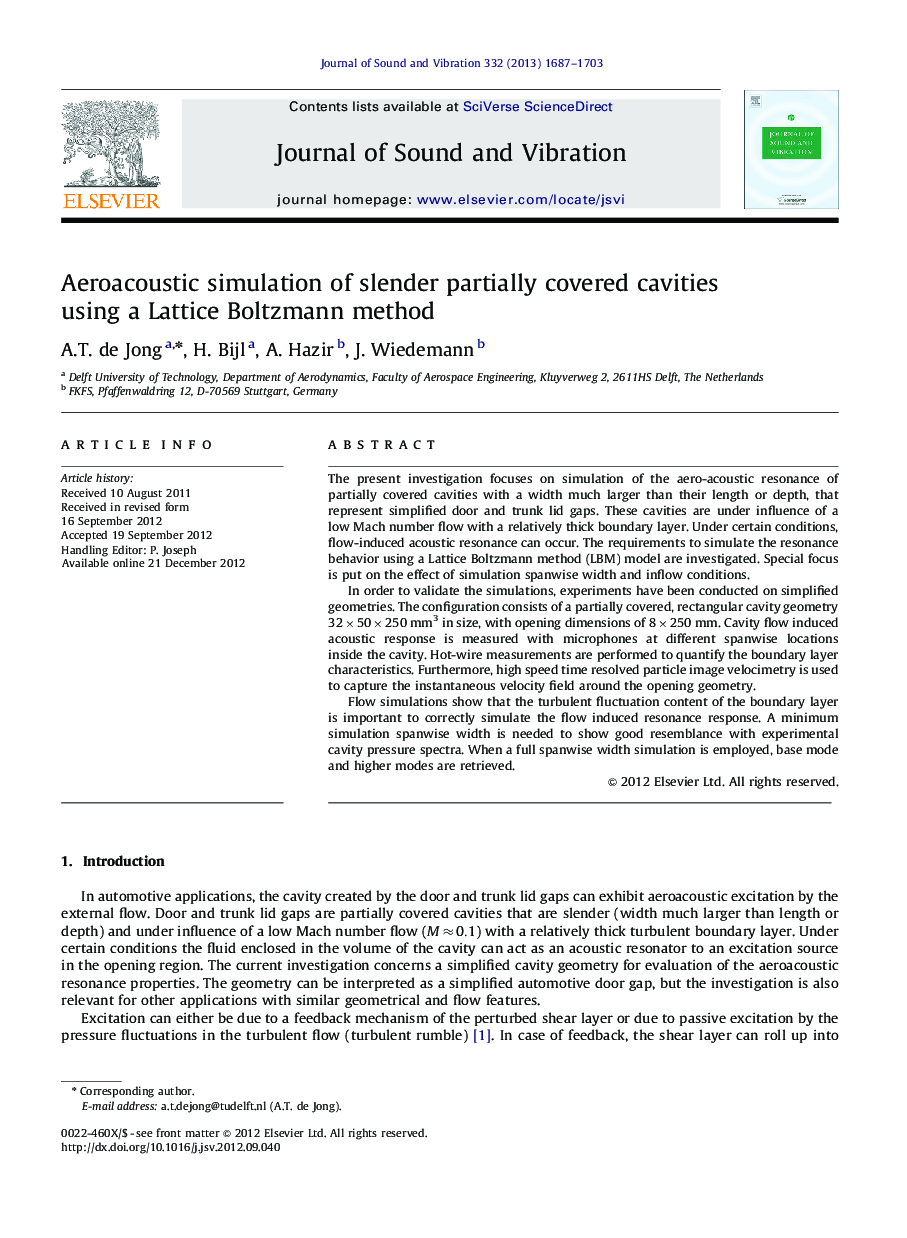| Article ID | Journal | Published Year | Pages | File Type |
|---|---|---|---|---|
| 287909 | Journal of Sound and Vibration | 2013 | 17 Pages |
The present investigation focuses on simulation of the aero-acoustic resonance of partially covered cavities with a width much larger than their length or depth, that represent simplified door and trunk lid gaps. These cavities are under influence of a low Mach number flow with a relatively thick boundary layer. Under certain conditions, flow-induced acoustic resonance can occur. The requirements to simulate the resonance behavior using a Lattice Boltzmann method (LBM) model are investigated. Special focus is put on the effect of simulation spanwise width and inflow conditions.In order to validate the simulations, experiments have been conducted on simplified geometries. The configuration consists of a partially covered, rectangular cavity geometry 32×50×250 mm3 in size, with opening dimensions of 8×250 mm. Cavity flow induced acoustic response is measured with microphones at different spanwise locations inside the cavity. Hot-wire measurements are performed to quantify the boundary layer characteristics. Furthermore, high speed time resolved particle image velocimetry is used to capture the instantaneous velocity field around the opening geometry.Flow simulations show that the turbulent fluctuation content of the boundary layer is important to correctly simulate the flow induced resonance response. A minimum simulation spanwise width is needed to show good resemblance with experimental cavity pressure spectra. When a full spanwise width simulation is employed, base mode and higher modes are retrieved.
► We model the aeroacoustic resonance of slender partially covered cavities. ► The requirements to simulate using a Lattice Boltzmann method are investigated. ► Detailed hotwire, microphone and PIV experiments are conducted for comparison. ► Direct boundary layer turbulence content and spanwise sim width are important. ► Full span simulations can retrieve higher modes as well.
